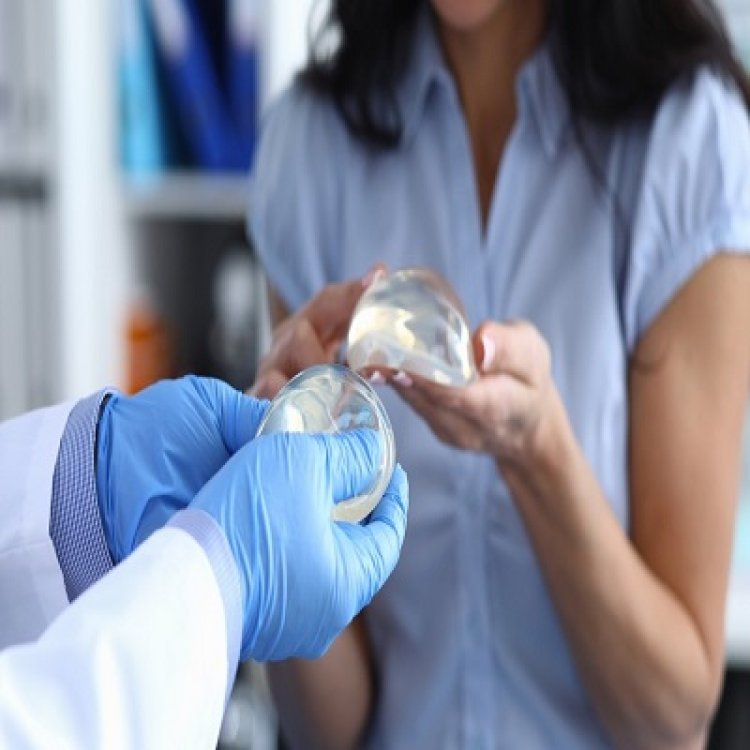Understanding the Risks and Complications of Breast Augmentation
Enhance your confidence with expert breast augmentation in Islamabad. Safe, affordable, and natural-looking results await you at top clinics.
Share this Post to earn Money ( Upto ₹100 per 1000 Views )

Breast augmentation is one of the most popular cosmetic procedures among women seeking to enhance their physical appearance and self-esteem. With advanced surgical techniques and experienced professionals available, many patients are now choosing Breast Augmentation in Islamabad for its convenience and reliable results. However, like any surgical procedure, breast augmentation carries certain risks and potential complications that should be fully understood before making a decision. Being informed helps patients make educated choices and manage their expectations with clarity and confidence.
Common Side Effects After Surgery
It is normal to experience some side effects following breast augmentation. These typically include swelling, bruising, soreness, and temporary changes in nipple sensitivity. Such symptoms are part of the body’s natural healing process and usually resolve within a few weeks. Patients are advised to rest, wear post-surgical support garments, and follow postoperative instructions closely to minimize discomfort and aid in smooth recovery.
Capsular Contracture
Capsular contracture is one of the more well-known complications of breast augmentation. It occurs when the scar tissue that forms around the implant tightens, causing the breast to feel firm or distorted in shape. While not always painful, severe cases may require surgical correction. The risk of capsular contracture can be reduced by choosing the right implant type and surgical technique, and by following postoperative care protocols.
Implant Rupture or Leakage
Although modern implants are highly durable, there is a possibility of rupture or leakage over time. Saline implants deflate visibly when ruptured, while silicone implants may not show obvious signs, a condition known as a “silent rupture.” Routine check-ups and imaging tests such as MRI or ultrasound are essential to monitor implant integrity. If a rupture is detected, replacement surgery may be required.
Implant Displacement or Malposition
Implants may shift from their original position, leading to an uneven or unnatural breast shape. This can occur due to poor implant placement, insufficient tissue support, or physical trauma. In some cases, revision surgery is needed to correct the positioning and restore a balanced appearance. Choosing a skilled and experienced surgeon greatly reduces this risk.
Infection
Like all surgeries, breast augmentation carries a risk of infection, though it is relatively rare when performed in sterile conditions. Symptoms such as redness, warmth, fever, or unusual discharge should be reported immediately. Mild infections may be treated with antibiotics, while severe cases might require implant removal. Preoperative health screening and proper postoperative care help in significantly lowering this risk.
Changes in Sensation
Some patients report increased or decreased nipple and breast sensitivity after surgery. These changes are typically temporary, but in rare instances, they may become permanent. This is usually influenced by the implant’s size and placement, as well as individual healing patterns. A thorough consultation with your surgeon can help determine the approach that minimizes such risks.
Scarring
All surgical procedures involve some level of scarring. However, breast augmentation scars are typically small and strategically placed in inconspicuous areas such as under the breast fold, around the areola, or in the armpit. The visibility of scars depends on skin type, genetics, and how well post-operative instructions are followed. Over time, scars tend to fade and become less noticeable.
Breastfeeding Challenges
While many women can successfully breastfeed after breast augmentation, it’s important to note that certain surgical techniques may affect milk ducts or glandular tissue. Women planning future pregnancies should discuss this with their surgeon beforehand to choose an implant placement that minimizes potential interference with breastfeeding.
Need for Future Surgeries
Breast implants are not lifetime devices. Though they can last many years, patients may eventually require revision surgeries due to aging, implant wear, or aesthetic changes. Being mentally and financially prepared for the possibility of future procedures is an essential part of planning for breast augmentation.
Psychological Impact
For most patients, breast augmentation results in increased confidence and satisfaction. However, if expectations are unrealistic or emotional readiness is lacking, it may lead to disappointment or regret. A good surgeon ensures that patients are making the decision for the right reasons and have a realistic understanding of the outcomes.
Conclusion
Understanding the potential risks and complications of breast augmentation is crucial for anyone considering the procedure. While the surgery is generally safe and effective, being aware of the possible challenges allows patients to make informed decisions and approach the process with realistic expectations. By choosing a qualified and experienced surgical team and following all medical guidelines, most women experience satisfying and long-lasting results. For those seeking professional expertise and personalized care, the team at SKN Cosmetics clinic in Islamabad provides comprehensive breast augmentation services with a strong commitment to patient safety and satisfaction.














